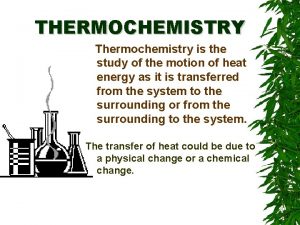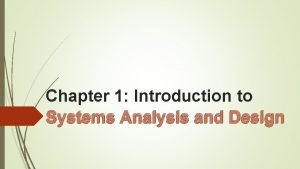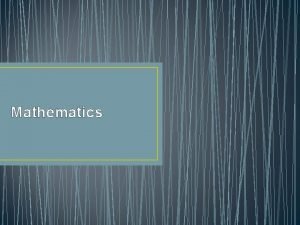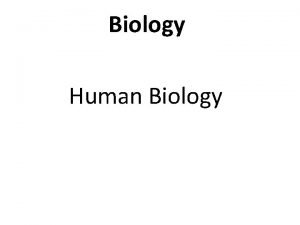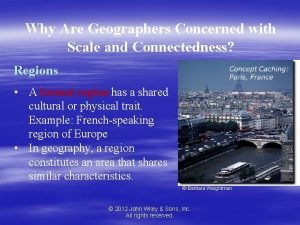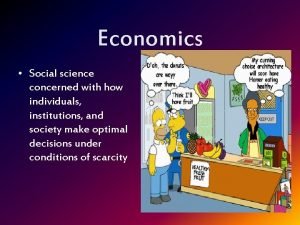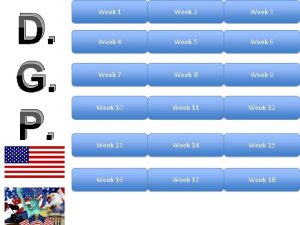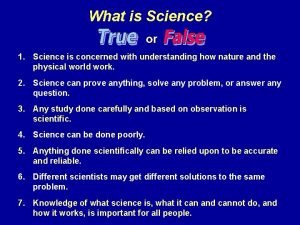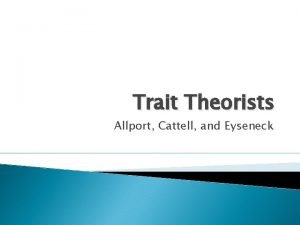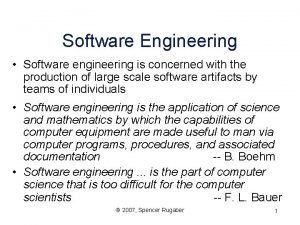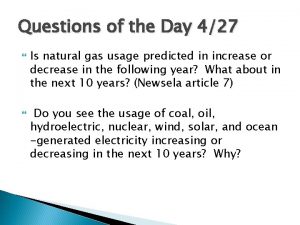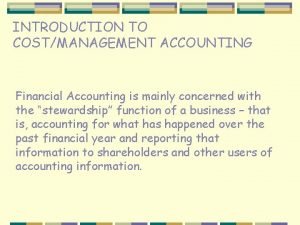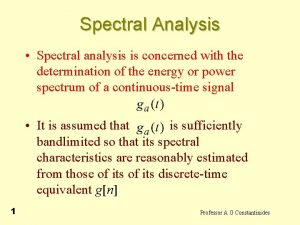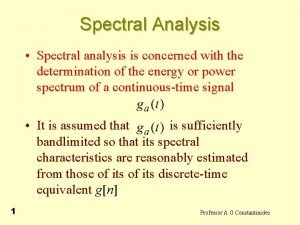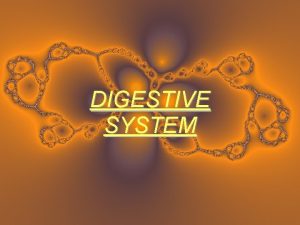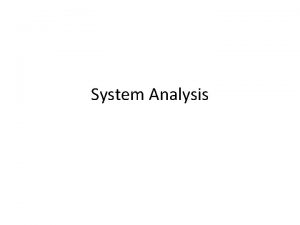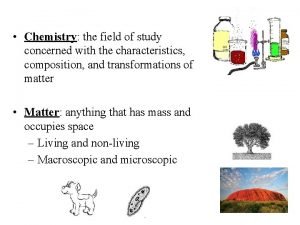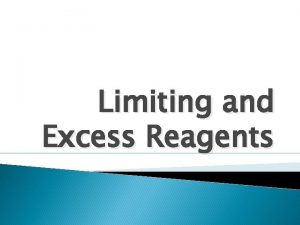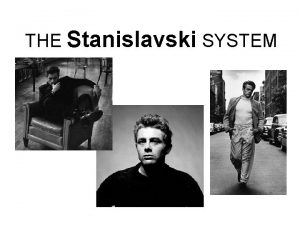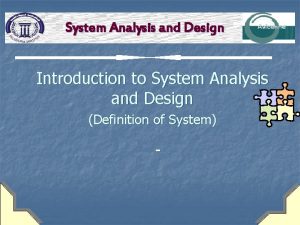SYSTEM ANALYSIS INTRODUCTION It is concerned with study




















- Slides: 20

SYSTEM ANALYSIS

INTRODUCTION It is concerned with study of various operations to be performed by the system. Prescribes the technical specifications Constructions of program and program testing. Determine the feasibility of a system & how it will meet the requirements of the system users.

Aspects of system analysis It involves : 1)Feasibility Study. 2) Requirement Analysis. 3)Structured Analysis. It requires a System Analyst. a) -who conducts a study , identifies activities , objectives. b)Determines the procedure to achieve the goals. c) Designs and implements system. d) Coordinate the efforts of all a people in the organization.

System analyst Work of Analyst Define the problems in the organisation. Consulting the problem and collecting the data. Coordiante the process of developing the solutions. Developing and designing the plan once accepted. Testing of plan. Attributes of Analyst Knowledge of people. Knowledge of Business functions. Knowledge of Data Processing Principles. Ability to Communicate. Flexibility. Well educated and sharp mind.

Aspects Feasibility Requirement Structured Checks the feasibilty and whether it will be appropriate more than the existing one. Checks the need and requirement. Defines the structure and gives directions.

Objectives of feasibility Analysis Identify the deficiencies in the current system. Determine the objectives of the proposed system. To acquire a sense of scope of the system. To identify the responsible users.

Types of Feasibility Technical Function al Time Legal Types of feasibilty Operational Economic Management Social

Steps of Feasibility study Constitute of a project team Identification of potential candidate system. Identification if characteristics of candidate systems. Performance and cost evaluation. Weighing system performance and cost data. Selection of best system. Preparation of feasibility report.

Requirement Analysis. Procedures and forms used. Onsite observations. Interviews Questionnaires. System used in other organistaions.

Structured Analysis. It is a graphical representation. Easy to understand. Partitioned to get a clear picture of progression. Logical, precise, highly readable.

Data flow Diagra m Decision Table. Tools Data Dictionary Structured English Decision tree

Data flow diagram Its shows flow of data. Leads to visualization. It usually begins with drawing context level DFD-showing interactions between system and outside entities(sources of data to the system) ------which is also known as bubble chart. comprises of square, rectangle, arrow and Data circle. Externa flow Process l entity Data store

External entity-sources of data to the system. It determines the system boundary. Beyond the influence of the developer. Data flow-represent movement of data. it must begin and or end at a process. Data Store-represent that data is not moving. These are the common links between data and process. Process – represents an activity that transforms the data.

DFD’s…… ADVANTAGES Gives understanding. Communicating current system knowledge to the user. Used as a part of system documentation. Gives summary to the system. Easy to follow errors. DISADVANTAGES Take many alteration before agreement with the user. Physical consideration is usually left out. Difficult to understand because of ambiguity.

Data dictionary Structured repository of data. Keep a detail the details of the contents of data flows, process and data stores. Data element Data structure Data flow Data

Structured English It uses logical constructs to carry out instructions for actions. Decisions are made through the use of IF, THEN, ELSE, and SO statements. Highly correlated to the decision tree

Decision Trees Sketch out the logical structure based on some criteria. It is a graphical representation of the conditions , actions and rules found in a decision tree. 10% disc. One can transverse from top level to the Used our card? Ordered more than 20, 000 Y bottom level. Y 5%disc Preferred customer N N 25%disc

ADVANTAGES Applied to real problems. No prior assumptions about the data. Able to process both the numerical and categorical data. Easy to understand. DISADVANTAGES Output attribute must be categorical. Limited to one output attribute. Decision tree algorithms are unstable. Trees created from numeric data base can be complex.

Decision Tables Table of contingencies for defining a problem and actions that need to be taken for it. Single representation of relationship between conditions and actions. It has two parts: stub and entry. Such pair of condition sets and actions is known as RULES. Here Y-yes, N-no and dash for don’t care

ADVANTAGES Concise descriptions of logically complex situations. Easier to draw and change the flowcharts. More compact documentation. Easier to follow paths. DISADVANTAGES Difficult to modify. Incomprehensible in case of long decision table.
 Branch of biology concerned with the study of fungi
Branch of biology concerned with the study of fungi Thermochemistry is study of
Thermochemistry is study of Thermochemistry is a study of
Thermochemistry is a study of Well design feasibility
Well design feasibility System analysis and design
System analysis and design Introduction to system analysis and design
Introduction to system analysis and design Network layer design issues
Network layer design issues Concerned with quantity
Concerned with quantity Biology is concerned with
Biology is concerned with Formal vs functional region
Formal vs functional region Cuss graded assertiveness
Cuss graded assertiveness What is economics in social science
What is economics in social science Cannibals
Cannibals The procedural view of democracy is most concerned with
The procedural view of democracy is most concerned with What is science concerned with
What is science concerned with Science is concerned with
Science is concerned with Ethics is the branch of philosophy concerned with:
Ethics is the branch of philosophy concerned with: Cattell and allport
Cattell and allport Spencer rugaber
Spencer rugaber Union of concerned scientists
Union of concerned scientists Bookkeeping is mainly concerned with
Bookkeeping is mainly concerned with

